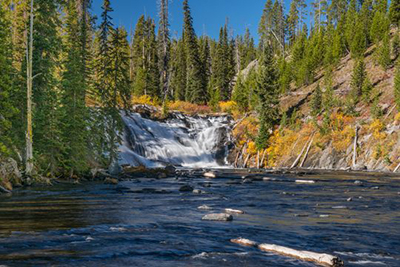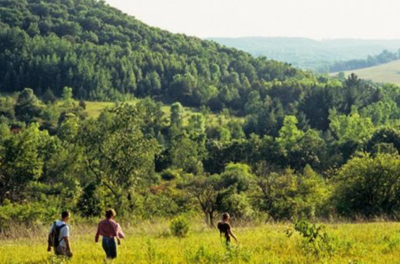House Passes Land Protection Package: Why it’s a huge win for conservationists
By: National Geographic
Posted on:02/28/2019On Tuesday, the U.S. House of Representatives voted to authorize a sweeping land protection package that would protect over two million acres of land across the country.
 On Tuesday, the U.S. House of Representatives voted to authorize a sweeping land protection package that would protect over two million acres of land across the country. The nearly 700-page package includes legislation that touches nearly every state, expanding wilderness areas from New Hampshire to Alaska, carving out new protections for rivers and state forests, and permanently protecting several vast tracts of land from future mining.
On Tuesday, the U.S. House of Representatives voted to authorize a sweeping land protection package that would protect over two million acres of land across the country. The nearly 700-page package includes legislation that touches nearly every state, expanding wilderness areas from New Hampshire to Alaska, carving out new protections for rivers and state forests, and permanently protecting several vast tracts of land from future mining.
The bill also includes a crucial guarantee: that the popular Land and Water Conservation Fund, which uses revenues from offshore oil and gas drilling to pay for land and conservation efforts countrywide, will be permanently authorized. Authorization for the fund, which has been in existence since 1965, lapsed in September of 2018, jeopardizing conservation projects across the country. If this legislation passes, the fund will be permanently enshrined—cementing backing for the 41,000 projects and nearly 2.4 billion acres of public lands it supports.
“This is a package that really affirms Congressional support for conservation, public lands, recreation, and cultural and historic preservation and protection,” says Lynn Scarlett, a vice president at the Nature Conservancy. “It really shows that they are recommitting to this value set that both Congress and their constituents care about in a big way.”
The big picture
Over the past few years, much of the news about public lands has centered on how protections are rolling back. National monuments have been shrunken; national forests have been opened to logging; and millions of acres of public lands have been opened up to oil and gas exploration. But in this massive, bipartisan bill—it passed the Senate nearly unanimously—many see a renewed commitment to conservation and protection of public lands.
“I think the reality is, even when the politicians are getting in each other’s way, communities across the country have never stopped caring about public lands,” says Drew McConville, a director at the Wilderness Society, a Washington, D.C.-based nonprofit that pushes for protection and access to public lands.
The entire final package includes a wide array of new protections for lands across the country. Most notably, over 1.3 million acres country-wide will be protected as “wilderness,” which is the highest level of protection that can be given to U.S. public lands. And nearly a million more acres—for a total of about 2.3 millions acres, according to the Wilderness Society—will gain some other types of protection, as national monuments, protected Wild and Scenic Rivers, or a host of other designations.
“This is an issue that a lot of Americans really want”
As political conversations focused elsewhere in the past few years, many conservation projects got stuck in limbo. Projects that communities across the country were pushing for—such as national monument designation for the Mississippi home of Medgar Evers, a civil rights leader who was shot and killed in his driveway in 1963—piled up on political desks.
But the desire for more land, more protection, and more concrete commitments to conservation kept fomenting in communities across the country.
In California’s deserts, for example, several different communities collaborated to push forward a bill, included in the new package, that adds 43,000 acres of new lands to the Joshua Tree and Mojave Desert park systems, and allows the expansion of the Mojave Desert protected areas as well. The project was supported by a broad swath of the communities—from conservation groups to offroad vehicle advocacy groups.

“Everybody is winning, to some extent,” says Peter Satin, the director of Land Management at the Mojave Desert Land Trust, a conservation organization that acquires and manages lands in the California desert region. “What’s remarkable about the desert bill is that it really balances well expansions of public lands for conservation purposes, wilderness areas, and national parks while also expanding recreation areas.”
The package also appealed to hunters, anglers, and other sportspeople. Many of the bills included support conservation efforts or protect land in areas crucial for conservation. Dan Wrinn, the director of government affairs at Ducks Unlimited, a Memphis-based conservation nonprofit, touts the value of conservation programs in the Prairie Pothole areas of the northern Great Plains.
“That's your duck factory,” he says. “It produces about half of the ducks found in the 48 contiguous states, and it’s hugely important for waterfowl conservation.”
The package also opens up access to all federal lands for hunting and fishing, unless the management plans of those lands specifically prevents them. That doesn’t mean that every little tract of public land will be hunted—but in some areas, access for outdoorspeople may get easier.
Overall, the package garnered wide support from a broad coalition nationwide.
“This is an issue that a lot of Americans really want,” says Kathy DeCoster, the director of Federal Affairs at the Trust for Public Land, a nonprofit that advocates for public lands access nationwide. “They want their public lands protected. They want access to those lands. They want to see government take conservation seriously.”
Land and Water Conservation Fund gets a new lifeline
The public lands network that crisscrosses the United States is vast and complicated, composed of tracts as small as the corner playground to the vast, iconic vistas of the Grand Canyon. What many of the tracts have in common is that they’re paid for, at least in part, by money that comes through a program called the Land and Water Conservation Fund.
The fund was established in 1964, as part of a grand bargain: It would take revenues from offshore oil and gas drilling projects and funnel those resources into public lands efforts across the country. Today, that means that over $900 million is earmarked for the fund each year, though only about half that generally gets passed along annually.
“The Land and Water Conservation Fund was a deal struck by the nation saying gee, as we develop our offshore resources, let’s at the same time balance that with an investment in nature,” says Scarlett. “It was a grand bargain. Yes, we’ll access resources, but yes, let’s pair that with conservation.”
Over its 54-year life, the fund has been popular amongst all types of lawmakers and communities. But in 2015, on its 50th anniversary and at the end of its authorization period, some lawmakers wanted to rethink the program. Congress struck a deal to authorize it for another three years. But in September of 2018, that authorization lapsed—leaving the future of the entire program, and the millions of acres it provides support to, in limbo.
If passed, the new legislation would protect the fund in perpetuity. It’s not a silver bullet—Congress still has to agree each year to send the money it collects to the different agencies that oversee individual projects. But the protection, says Raúl Grijalva, the Democratic chair of the House Natural Resources Committee, would go a long way.
“I think there's been a realization—explicit or not—that the public loves their public lands and wants them protected, added to, and they don't want them touched,” he says. “That’s a real, strong public opinion. I hope this becomes the building block for what we do next, to move this conservation priority forward.”
 Sign In
Sign In
 Sign In
Sign In
